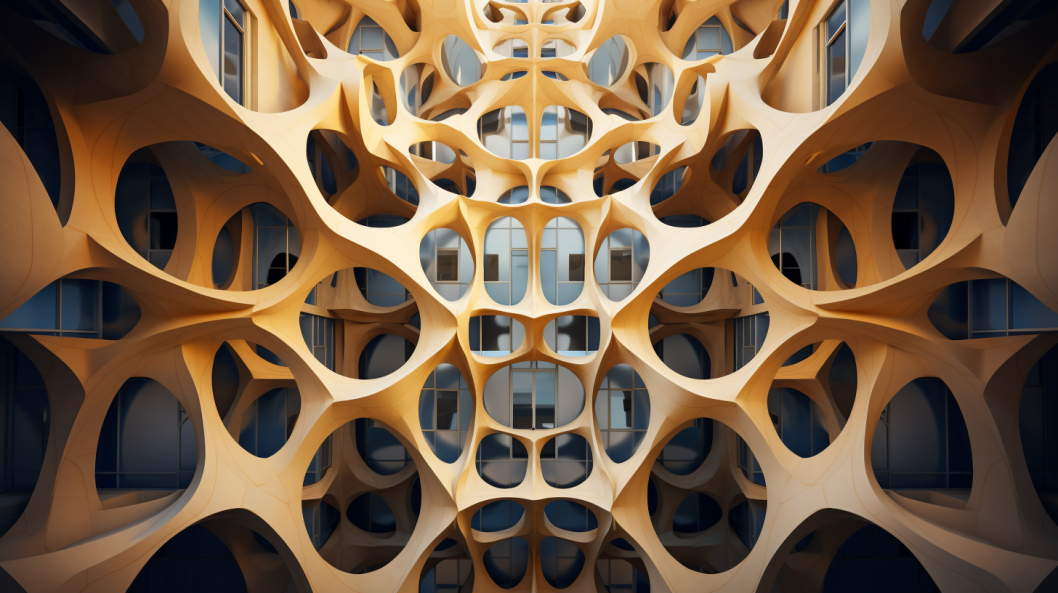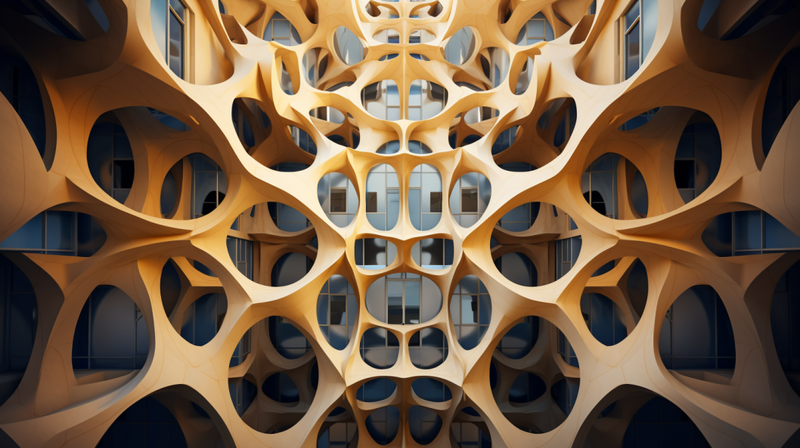Fractals, mathematical entities with self-similarity and intrinsic complexity at every scale, have surfaced as a compelling muse for architects and designers globally. Found inherently in natural phenomena, such as snowflakes, mountains, and coastlines, fractals bring forth the notion that simple rules, when enacted iteratively, can birth immense and unpredictable complexities. In the architectural domain, the integration of fractals opens up an innovative panorama, amalgamating art, mathematics, and science to produce structures of infinite complexity and aesthetical appeal. This article ventures into the intertwined pathways of fractals and architecture, exploring their potential to generate designs that mirror the structural and aesthetic finesse found in nature.
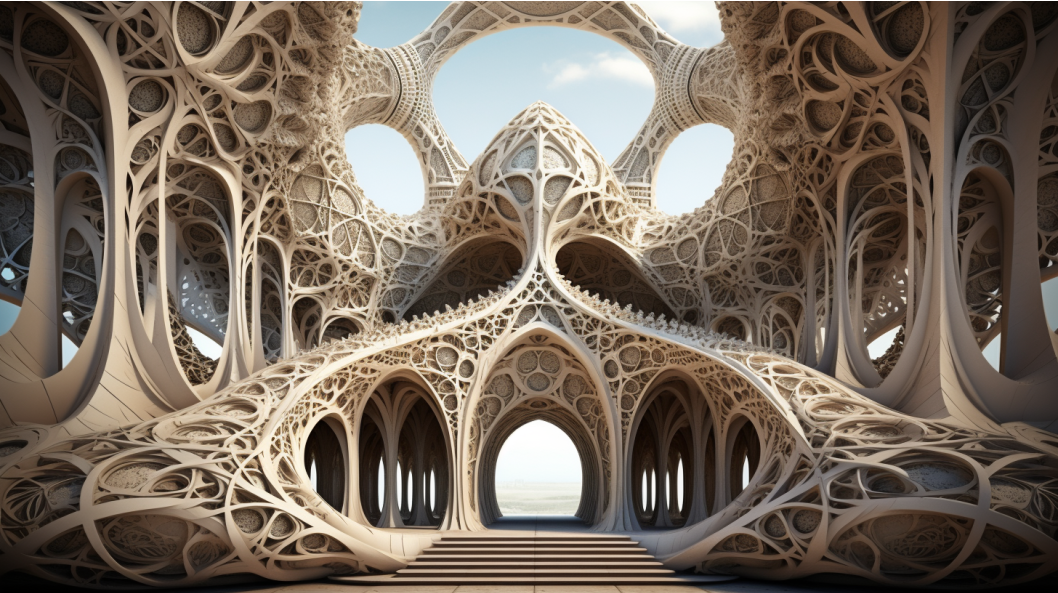
Understanding Fractals
Before delving into architecture, a basic understanding of fractals and their inherent properties is pivotal. Defined by a recursive process or pattern that repeats at every scale, fractals are infinitely complex, meaning they present unending detail and self-similar patterns, regardless of the extent to which they are zoomed in or out. This attribute of boundless complexity from simple rules challenges and inspires architects to synthesize designs that are not only visually compelling but also integrate the harmony and balance observed in nature.
Unveiling the Fractal Architecture
The application of fractal geometry in architecture is not just an aesthetical choice; it is a deliberate employment of mathematical principles to create structures that resonate with natural designs and patterns. Some classic examples of fractal architecture include the Sierpinski triangle, the Menger sponge, or the mesmerizing pattern of the Romanesco broccoli. These geometries manage to embody both simplicity and complexity, where the simple repetition of a pattern yields intricate and often unexpected structures.
By examining the natural world and implementing fractals, architects have the potential to build structures that are more sustainable, coherent, and in harmony with the natural environments surrounding them. For instance, the recursive patterns of branching found in trees and river networks demonstrate an efficient means of providing support and distributing resources — principles that can be mirrored in architectural design to optimize resource distribution and structural support within buildings.
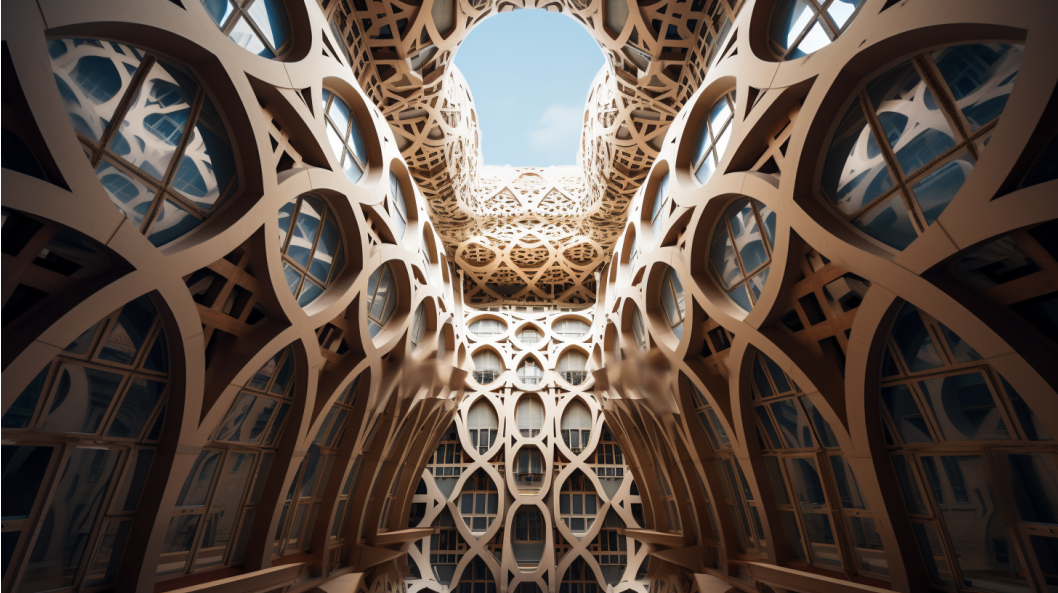
Aesthetic and Functional Symbiosis
The aesthetical appeal of fractals lies in their intricacy and unending complexity, striking a chord with our intrinsic fascination towards patterns and repetitions. For architects, this provides a tool to explore uncharted design territories that captivate onlookers, drawing them into a visual journey of endless exploration.
On the functional plane, fractal design in architecture proposes enhanced efficiency and optimization. By mimicking the fractal geometries found in nature, architects can formulate designs that utilize space in a more proficient manner, simultaneously providing structural integrity and optimizing energy usage within a built environment. Additionally, with the advance of computational design and digital fabrication technologies, the complexity of fractal geometries can be feasibly realized in architectural forms, structures, and environments.
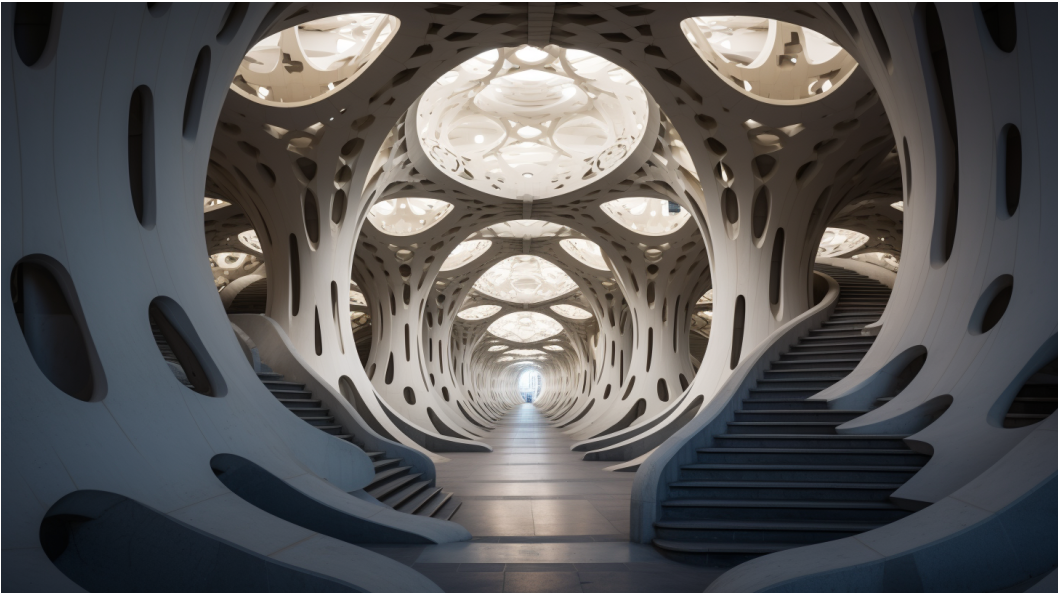
Sustainable Futures through Fractal Designs
In the current age, where sustainability is no longer a choice but a requisite, the integration of fractals in architectural design can serve as a pivotal step towards creating structures that are more in sync with the environment. Fractal architecture encourages architects to derive inspiration from natural phenomena, ensuring the incorporation of designs that are inherently more sustainable and adaptable to changing environmental conditions.
Embracing fractal designs paves the way towards constructions that naturally blend with their surrounding ecosystem, potentially diminishing the human footprint on the environment. By simulating the seamless and self-sustaining designs found in nature, it is plausible to conceptualize and realize architectural entities that not only complement but also enhance the natural environments in which they are situated.
Challenges and the Path Forward
The application of fractals in architecture is not without its challenges. The real-world implementation of these designs requires the navigation through a myriad of practical and logistical obstacles, including adhering to building codes, managing structural integrity, and ensuring that the designs are functional and accessible. Thus, architects must strike a delicate balance, harnessing the complexity and beauty of fractal designs while ensuring that the structures they create are safe, feasible, and suitable for their intended purpose.
The future of fractal architecture remains a fertile ground, rich for exploration and discovery. As technology advances and our understanding of fractals deepens, new horizons will be unveiled, providing architects with a broader and more sophisticated palette from which to draw inspiration. This, coupled with a genuine commitment to sustainable and innovative design, promises a future where architecture is not just a reflection but an enhancement of the natural world.
Fractal architecture, with its enigmatic complexity and aesthetic allure, stands as a testament to the possibilities that arise when mathematics, nature, and design intertwine. It is a dance between chaos and order, simplicity and complexity, form and function. By exploring and integrating fractal geometries into architectural designs, architects have the ability to craft structures that are not only visually arresting but also optimized in function and sustainability, crafting a future where built environments exist in harmonious coexistence with the natural world. Thus, the architectural journey into the realm of fractals provides not just a novel design methodology but also a pathway towards constructing a sustainable and harmoniously integrated future.
